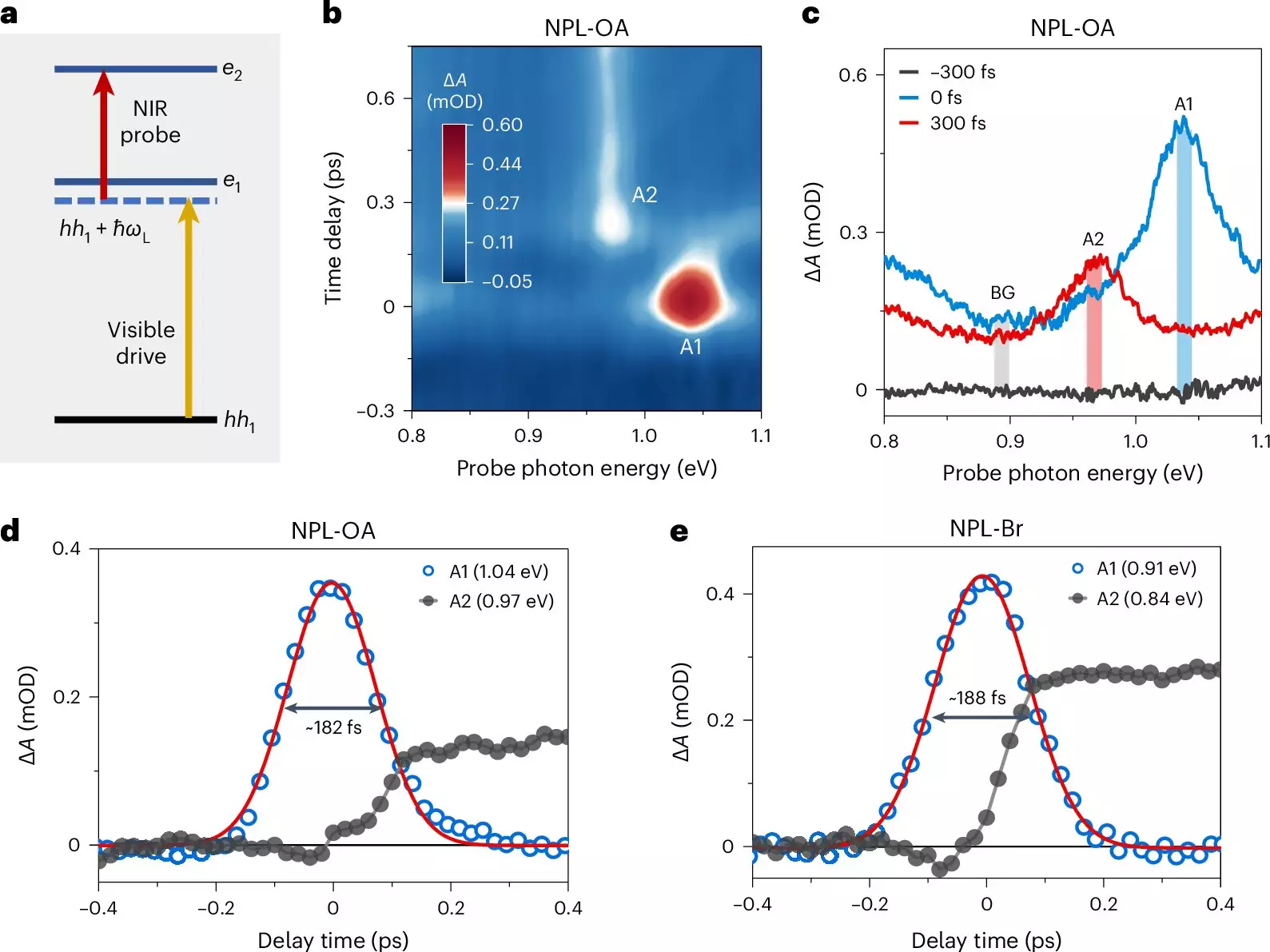The advent of solution-processed semiconductor nanocrystals, or colloidal quantum dots (QDs), has revolutionized the field of nanotechnology. Scientists had long hypothesized that the size of a semiconductor could influence its electronic and optical properties, but it wasn’t until the emergence of QDs that these theoretical concepts were fully realized. These nanocrystals demonstrate remarkable size-dependent optical characteristics, which manifest as varying colors that can be observed under normal conditions. This vivid display is indicative of the quantum size effect at play, illuminating profound implications for technology and research.
Researchers internationally are now redirecting their attention towards exploring unique quantum phenomena associated with QDs, such as single-photon emission and the manipulation of quantum coherence. Among the intriguing concepts gaining traction in quantum mechanics is the idea of Floquet states—exotic states arising from the interaction between electromagnetic radiation and quantum systems. However, capturing these states has posed significant experimental obstacles, limiting our exploration of these quantum realms.
Challenges in Observing Floquet States
Historically, experimental observations of Floquet states have relied heavily on environmental control, with studies conducted in ultra-low temperatures and high vacuum settings. These conditions are necessary to prevent interactions that could disrupt delicate quantum states. Existing methods often necessitate high-energy driving fields, operating in the infrared or even microwave ranges, which further complicates the experimental framework. Consequently, these factors render the investigation of such quantum effects impractical in more common laboratory environments.
It wasn’t until recently that the scientific community witnessed a pivotal breakthrough in this field. An ambitious study led by Professor Wu Kaifeng and his team from the Dalian Institute of Chemical Physics, affiliated with the Chinese Academy of Sciences, has marked a new chapter in the study of Floquet states by utilizing all-optical spectroscopy. Their work, documented in Nature Photonics, reports the first direct observation of Floquet states under ambient conditions and in the visible to near-infrared range—a remarkable achievement that could shift the landscape of quantum optics.
Prof. Wu’s team focused on utilizing quasi-two-dimensional colloidal nanoplatelets, engineered over the past decade, to achieve this groundbreaking observation. The strong quantum confinement in the thickness dimension results in uniquely defined electronic states that allow for interband and intersubband transitions within the visible and near-infrared spectra. The research elucidates how these transitions interconnect to create a three-level system, where a sub-bandgap visible photon interacts with the heavy-hole state, facilitating the transition into the Floquet state.
This delicate balancing act enables the probing of the Floquet state via a near-infrared photon and its subsequent transition to a second quantized electron state. Remarkably, the research challenges the traditional notion that Floquet states dissipate rapidly after the interaction of pump and probe pulses. Instead, the team observed a fascinating dephasing process, wherein the Floquet state effectively translates into a real population of the electron state within hundreds of femtoseconds.
The findings from this study not only mark a significant step forward in the direct observation of Floquet states in semiconductor materials, but they also uncover the complex spectral dynamics of these exotic states. Prof. Wu asserts that such advancements can lead to enhanced control over optical responses and coherent evolution within condensed-matter systems. The implications are far-reaching—extending the applications of Floquet engineering to not only solid-state materials but also enabling coherent control over interfacial and surface chemical reactions through non-resonant light fields.
The research represents a thrilling intersection of nanotechnology and quantum mechanics, and it signals a new era in scientific exploration. As we continue to unravel the mysteries of colloidal quantum dots and Floquet states, the potential applications across fields—from quantum computing to advanced material sciences—seem virtually limitless. This pioneering research opens new avenues for future investigations and invites an exciting dialogue on the interplay between quantum mechanics and practical applications in technology.

